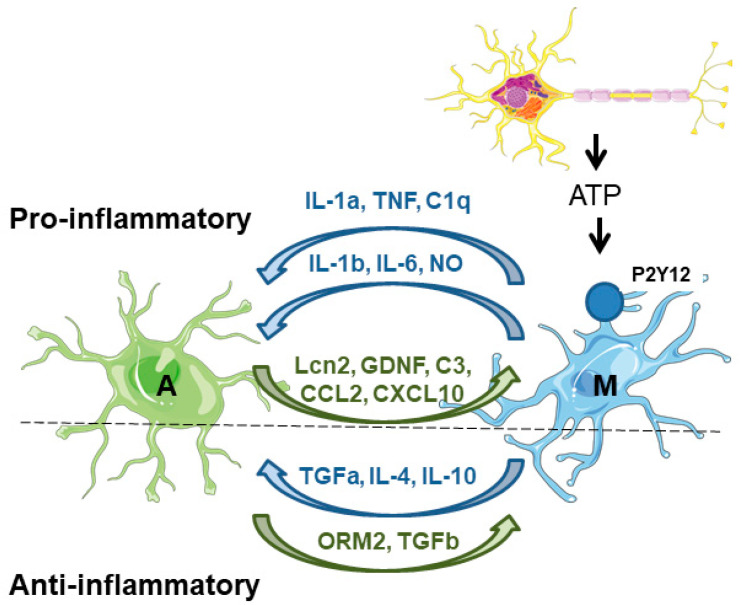Figure 3.
Astrocyte–microglia crosstalk. On the proinflammatory side of the coin, microglia are activated by the release of different components (e.g., ATP) from neuronal cells. Then, microglia induce the activation of astrocytes by the release of different compounds (IL1a, TNF, C1q). In addition, microglia also release proinflammatory mediators (IL-1b, IL-6, and NO) that maintain astrocyte reactivity. Astrocytes respond to microglia by releasing different proinflammatory mediators (Lcn2, GDNF, C3, CCL2, CXCL10) which maintain microglia in their activated state. On the anti-inflammatory side of the coin, microglia release different mediators (TGF-alpha, IL-4, and IL-10) to counteract the excessive activation of the astrocytes. These last cells also produce anti-inflammatory mediators (ORM2, TGF-beta) to reduce microglial activation. A—astrocytes; M—microglia. See text for details.

